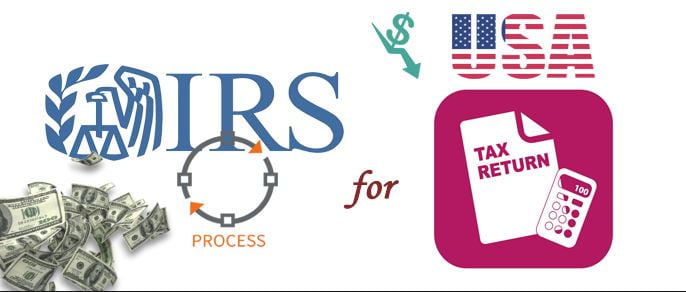An Overview of Paying Taxes, Filing a Return, and Getting a Refund
Form 1040 is used to calculate your income taxes
The purpose of a tax return (such as IRS Form 1040) is to calculate the total Federal income tax you owed for the prior year.
While a tax return is used to calculate your tax, it is not necessarily used to paytaxes. Instead, most regular people pay Federal (and state) income taxes over the course of the year through their paychecks. To verify this, check your most recent pay stub to see how much Federal tax is being taken out of each pay period.
“Federal income tax” does not include Social Security and Medicare
In examining your pay stub, it’s important to clarify that while Social Security and Medicare are also taxes imposed by the Federal government, they are not the “Federal income taxes” that are calculated on IRS Form 1040. Rather, Social Security and Medicare are separate taxes known as “FICA” or “payroll taxes.” The good news is that you don’t have to file any tax returns to report and pay Social Security and Medicare taxes. The bad news is that your employer deducts these taxes directly from your paycheck and pays the money to the IRS on your behalf. Your employer also files payroll tax returns on a combined basis for all of its employees (IRS Form 941). In summary, you don’t have any tax filing responsibilities when it comes to payroll taxes, but you do have to stick you chin out and get socked by Social Security and Medicare tax withholding.
Your tax return for the prior year is due by April 15th
 Returning to Federal income taxes, near the end of January of each year you should get a Form W-2 from your employer. This is a summary of how much income you received from your employer during the prior year, as well as how much Federal (and state) income tax they paid to the government on your behalf (Form W-2 also summarizes how much Social Security and Medicare tax you paid in over the course of the prior year).
Returning to Federal income taxes, near the end of January of each year you should get a Form W-2 from your employer. This is a summary of how much income you received from your employer during the prior year, as well as how much Federal (and state) income tax they paid to the government on your behalf (Form W-2 also summarizes how much Social Security and Medicare tax you paid in over the course of the prior year).
Using the information from your W-2 (and other sources), you complete your prior year tax return by April 15th of the current year. There is no reward or penalty for filing your tax return before April 15th but, again, the final due date is the 15th (unless it falls on a weekend, which makes the deadline the following Monday).
Upon completing your tax return you will finally know for sure how much tax you owed for the prior year. You will then compare that with how much you actually paid in through your paycheck. If you paid in more than you actually owed then you will be due a refund from the IRS. On the other hand, if you owed more than you actually paid in then you will have to include a check payable to “U.S. Treasury” with your tax return for the balance due.
An example of the tax filing process
To illustrate the concepts above, let’s say that during 2018 you were paid monthly, and you had $100 of Federal tax deducted from each of your paychecks. That means over the course of the year you paid a total of $1,200 in taxes to the Federal government through your paycheck, and the Form W-2 you receive at the end of January 2019 from your employer confirms that’s the case.
Prior to April 15th, 2019 you complete a 2018 IRS Form 1040 in order to calculate how much tax you owed for the prior year (2018) based on your income and other factors. After completing all of the appropriate forms and schedules, it turns out that your actual Federal tax liability for 2018 was $700. As a result, because you paid in ($1,200) more than you actually ended up owing ($700), you’ll end up getting a tax refund from the IRS of $500.
